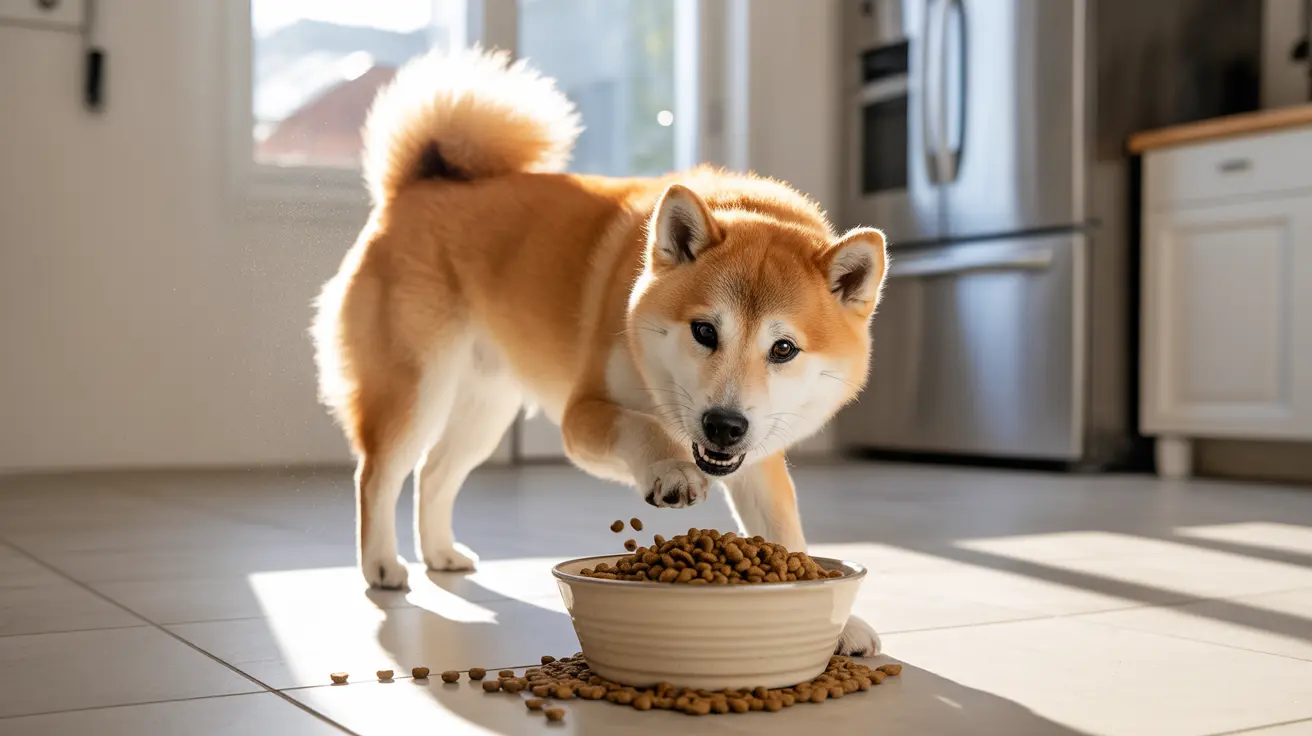The Ancestral Connection to Food Play
Dogs' tendency to play with their food often traces back to their wild ancestors. In nature, wolves and wild dogs would need to manipulate their prey, testing it for safety and sometimes moving it to a secure location before consuming it.
This instinctual behavior persists in modern domestic dogs, even though they receive regular meals in safe environments. Your dog might paw at their food or carry kibble away from their bowl as an expression of these deeply rooted instincts.
Boredom and Mental Stimulation
One of the primary reasons dogs play with their food is insufficient mental and physical stimulation. When dogs don't receive enough exercise or enrichment activities throughout the day, they may turn mealtime into an opportunity for entertainment.
Dogs need both physical exercise and mental challenges to stay happy and healthy. Without adequate stimulation, they might create their own entertainment by playing with their food, turning a simple meal into an impromptu game.
The Role of Anxiety and Stress
Sometimes, food play can indicate underlying anxiety or stress. Dogs may exhibit this behavior when they feel uncomfortable eating alone or when they're experiencing general anxiety. This can be particularly common in dogs with separation anxiety or those adjusting to new environments.
Environmental factors such as loud noises, unfamiliar surroundings, or recent changes in routine can also trigger stress-related food play. These behaviors often serve as coping mechanisms for anxious pets.
Social Interaction and Attention-Seeking
Dogs are inherently social animals, and mealtime can be an opportunity for interaction with their human family members. Some dogs play with their food specifically to gain attention from their owners, especially if this behavior has been inadvertently reinforced in the past.
This attention-seeking behavior might become more pronounced if dogs have learned that playing with their food results in increased interaction with their owners, whether positive or negative.
Solutions and Management Strategies
To address food play behavior, consider implementing these effective strategies:
- Increase daily exercise and mental stimulation
- Use puzzle feeders or interactive toys for meals
- Establish a consistent feeding routine
- Create a calm, designated eating area
- Avoid giving attention to food play behavior
It's important to ensure these solutions are tailored to your dog's specific needs and circumstances, as what works for one pet may not work for another.
Frequently Asked Questions
Why do dogs play with their food before eating it?
Dogs may play with their food due to instinctual behaviors, boredom, anxiety, or attention-seeking. This behavior can be traced back to their wild ancestors who needed to manipulate and test their food before consumption.
Can boredom cause my dog to play with their food, and how can I prevent it?
Yes, boredom is a common cause of food play. Prevent this by providing adequate exercise, mental stimulation, and interactive toys throughout the day. Regular walks, training sessions, and puzzle toys can help keep your dog mentally engaged.
How does anxiety influence a dog's behavior with food during mealtime?
Anxiety can cause dogs to exhibit unusual mealtime behaviors, including food play. Dogs might feel uncomfortable eating alone or in certain environments, leading to nervous behaviors around their food. Creating a calm, consistent feeding routine can help reduce anxiety-related food play.
What are effective ways to stop my dog from tossing or pawing their food around?
Use heavy, non-slip bowls, establish a quiet feeding area, and ensure your dog gets enough exercise before meals. Consider using slow-feeders or puzzle bowls to provide mental stimulation while preventing food scattering.
Does overfeeding contribute to dogs playing with their food, and how should I adjust their diet?
Yes, overfeeding can lead to excess energy and decreased food motivation, resulting in more food play. Measure portions carefully, stick to a regular feeding schedule, and consult your veterinarian about appropriate portion sizes for your dog's age, size, and activity level.






